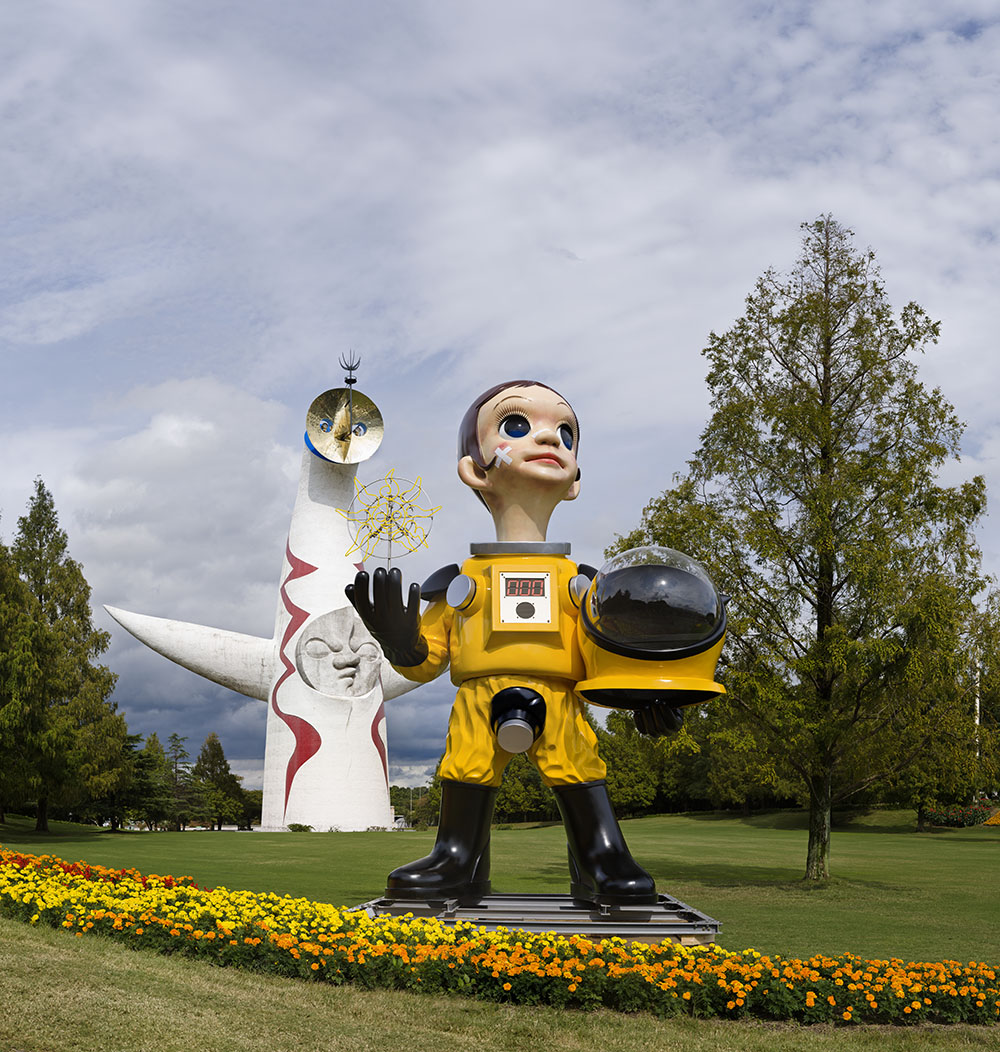(1/2) Sun Child [2011-2012]
Giving “Hope for Future” to the Children
The Great East Japan Earthquake and the tsunami led to Fukushima Daiichi nuclear disaster and the area around Fukushima Prefecture has been heavily exposed to and contaminated by nuclear fallout from the nuclear power plant. In the previous year, Yanobe had an exhibition MYTHOS (2010), with the motiefs of radiation and great flood. The exhibition unexpectedly had predicted the disaster in the next year. Yanobe had a sense of helplessness facing with the disaster. Even though he had repeatedly alarmed on the danger of nuclear power through his works, he could do nothing for preventing the disaster.
After the 3.11 Earthquake, Yanobe stopped to make works with cynical and critical intent, and turned to make works to utter positive messages toward society. He felt a nececcssity to change the society for the better and he began to plan to make a work which is “overtly positive”. Soon after the earthquake, he posted a message entitled as “People Who Stand Up” on the weblog of ULTRA FACTORY and he wrote about why the power of art is needed now. And then, he installed Giant Torayan, which is 7.2m in height, in the campus of Kyoto University of the Arts.
The message of “People Who Stand Up” was embodied in Sun Child, a work he made with a wish for the restoration from the nuclear disaster. Sun Child is a huge sculpture, which measures 6.2m in height. It wears a radiation protective equipment and hold a helmet in its left arm. It has a geiger counter on its chest but it shows number 0. Sun Child has a scar on its face but its eyes are looking up the sky. These features imply sufferings and overcoming and Yanobe put his wish that a time would come when radiation protective equipments are not needed any more in the future. Sun Child hold “a little sun” in its right hand and it symbolizes a hope for the future. In reality, nuclear contamination is still ongoing, but Sun Child envisions the time in future when nuclear decontamination is finished and nuclear power is not needed anymore.
Sun Child is also an homage to David (Michelangelo) (1501–1504), a masterpiece of the Renaissance sculpture, modeled on the young David, the future king of Israel, who defeated Philistine giant Goliath by throwing a stone from his sling. Yanobe compared the Giant to the huge power structure which controls energy and a stone to “small sun”. Sun Child, 6.2m in height, was planned to be installed outdoor and designed to stand by itself. It was modeled with styrofoam and made with FRP resin and then paint coated. It was his first time to use FRP resin and paint coats as materials for his work.
For the first time, Sun Child was installed at Expo ‘70 Commemorative Park to show that it inherits a message from Tower of the Sun by Taro Okamoto. The design of “small sun” is taken from the works based on the theme of “The Sun” by Taro Okamoto. Installing Sun Child there was to show “ a hope for the future” at the former site of EXPO ‘70, the place was a starting point of “ruin of the future”.
Sun Child travelled to Taro Okamoto Memorial Museum in Tokyo and travelled around. Yanobe and ULTRA FACTORY made other two bodies of Sun Child with different designs of “little sun”. One of them (No.3) was permanently installed in front of Minamiibaraki Station, close to Yanobe’ s home town and Expo’70 Commemorative Park. Sun Child (No.2) travelled to Osaka Prefectural Government Sakishima Building, Moscow Museum of Modern Art (Russia) and Haifa Museum of Art (Israel). Sun Child (No.1) was exhibited at Daigo Fukuryu Maru Exhibition Hall in Tokyo and Fukushima Airport for Contemporary Art Biennale of Fukushima 2012.
Sun Child is still traveling around and the project will continue until “hope of future” would come true.
